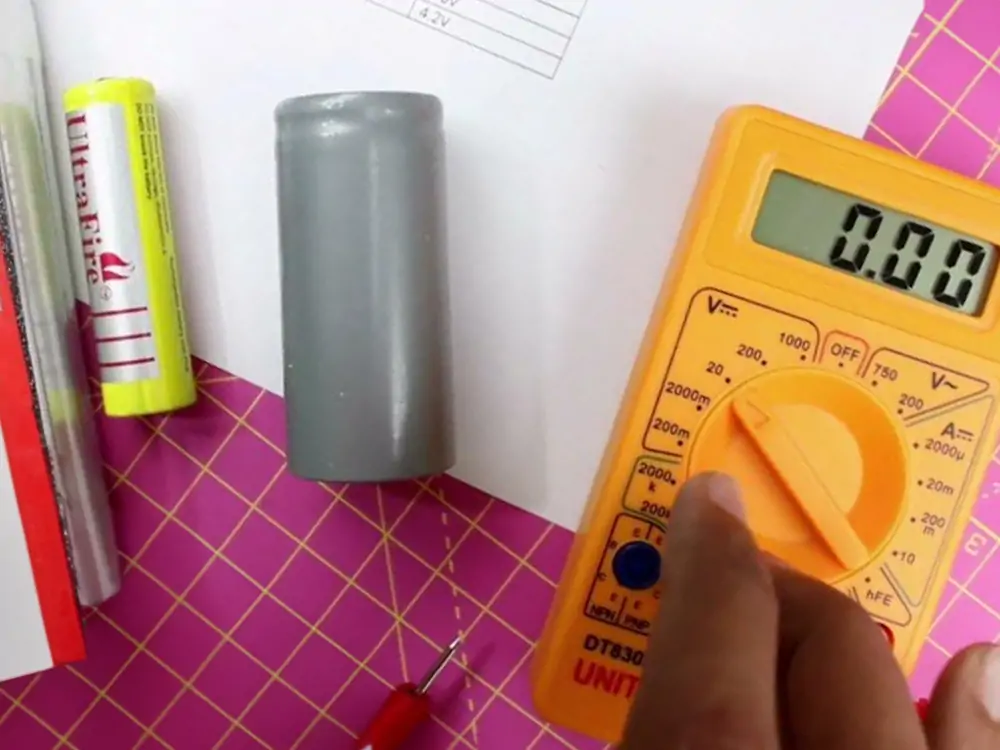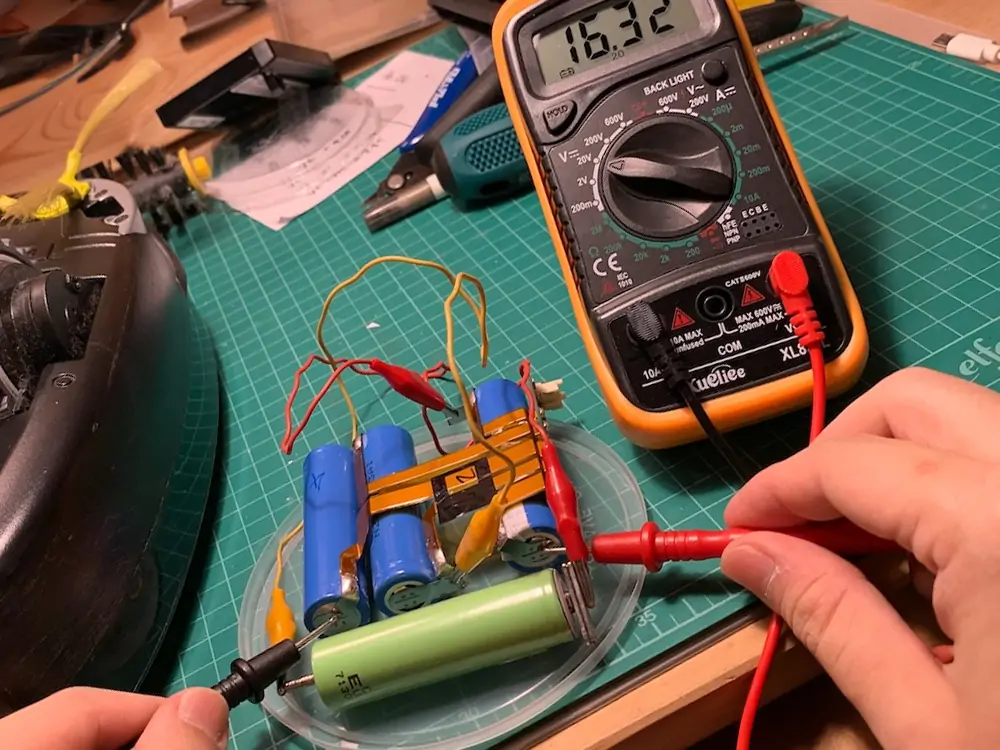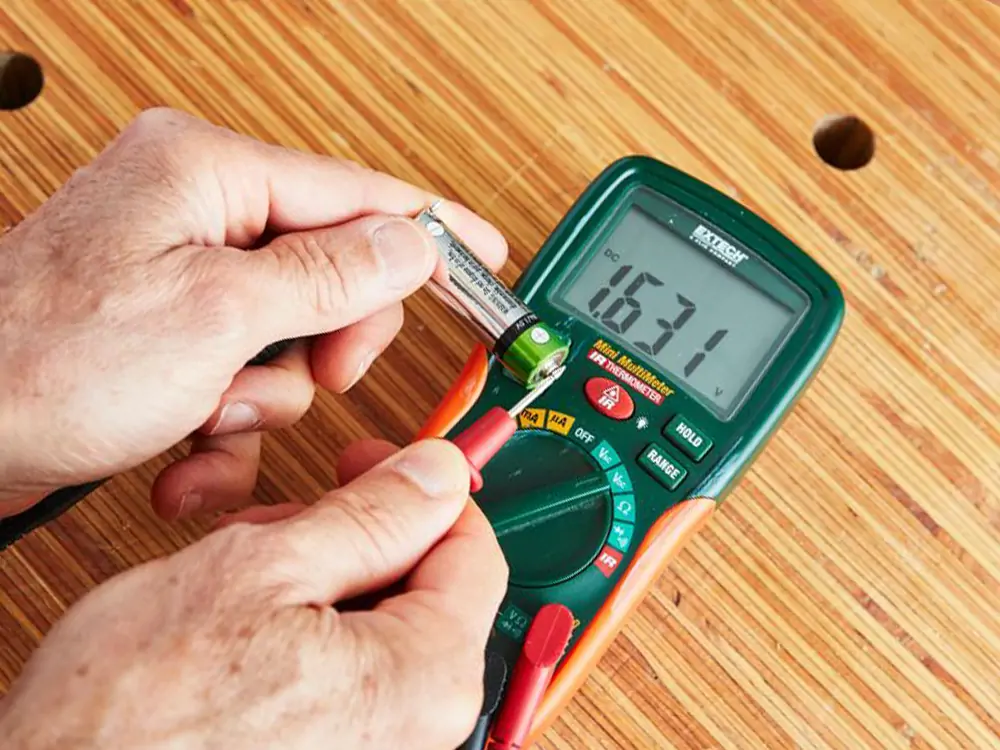An ammeter, volt-ohm meter (VOM), or multimeter is an electronic device that measures electrical parameters. It includes current, voltage, resistance, and capacitance. Due to this, it is ideal for testing the efficacy of batteries, including lithium batteries. How to test a lithium ion battery with a multimeter? The procedure is simple. You have reached the appropriate location if you are unfamiliar with this. Here’s a step-by-step guide on how to do it:
How To Test A Lithium Ion Battery With A Multimeter?
Safety Precautions
Lithium-ion batteries are secure but can be hazardous if misused or exploited. It is imperative to adhere to the following safety protocols when employing lithium-ion batteries:
- The battery should not be subjected to extreme temperatures, perforation, or crushing.
- Avoid exposing the battery to liquids or water.
- Only utilize the charger provided by the reliable manufacturer to charge the battery.
- Do not overcharge or over-discharge the battery.
- If the battery begins to enlarge or emanate a peculiar odor, refrain from using it immediately and dispose of it appropriately.
Preparing for the Test
Before moving towards how to test batteries with a multimeter, it is vital to prepare for the test.
Selecting the Right Multimeter

The initial step in preparing for the test is choosing the appropriate multimeter. There are two categories of multimeters: digital and analog. Unlike analog multimeters, digital multimeters are more precise and straightforward.
Before selecting a multimeter, verify its compatibility with lithium-ion battery testing by checking its voltage range.
Setting Up The Multimeter
After selecting the appropriate multimeter, it is time to configure it for testing. To begin, verify that the multimeter is configured to measure DC voltage. This is because lithium-ion batteries generate a direct current (DC) voltage.
Attach the black probe to the battery’s negative end and the red probe to its positive end. It is essential to be attentive to the signals on the terminals while performing this task.
Ensure you are utilizing gloves and safety eyewear before commencing the testing. This is due to the latent for lithium ion batteries to be harmful if not handled.
Conducting the Voltage Test

The voltage test is among the most critical tests to conduct when testing a lithium-ion battery with a multimeter. The battery’s voltage level, which can be used to determine whether it is completely charged or not, will be determined by this test.
Here are the steps to conduct the voltage test:
a. measuring voltage level
Make sure that you check the voltage level on your voltmeter first. The letter “V” with a straight line above it often shows this.
The next step is to connect your multimeter’s negative probe to its negative terminal and its positive probe to the battery’s positive terminal.
When the probes are attached to the wires, the voltmeter will show the voltage number on its screen. If it has one, the voltage number will be displayed on the LED screen of your voltmeter. If your voltmeter has one, it will show the voltage number on the screen.
b. interpreting voltage readings
Now that you have obtained the voltage reading, it is time to analyze the findings. The following are some general guidelines to adhere to:
- The voltage analysis of a completely charged lithium-ion battery should be from 3.7 to 4.2 volts.
- The battery is partially discharged if the voltage reading is less than 3.7 volts.
- If the voltage reading exceeds 3.0 volts, the battery is discharged and needs recharging.
- The battery may be damaged if the voltage reading exceeds 4.2 volts.
However, it is crucial to acknowledge that the voltage indicator on your multimeter may need to be more precise. Using a battery tester engineered for lithium-ion batteries helps get a more accurate measurement.
c. assessing battery health
Assessing the battery’s condition is essential when testing lithium batteries. A battery’s condition, efficacy, and capacity show its health.
Conducting a Load Test

A load test is one of the most effective methods for evaluating a battery’s health. It involves applying a burden to the battery and measuring its performance afterward.
This test can help you determine whether your battery is in excellent condition or requires maintenance.
Follow these procedures to conduct a load test:
- Connect the positive probe to the battery’s positive terminal and negative probe of the multimeter to the negative end.
- Adjust the DC voltage setting on the multimeter.
- Turn on any devices that need power from the battery.
- Note the voltage reading on the multimeter.
- Deactivate the devices and allow them to cool for a few minutes.
- Once more, consult the multimeter’s voltage reading.
When the devices are powered on, a large decrease in the voltage reading shows that the battery is in poor condition. However, if the voltage remains consistent, the battery may be in excellent condition.
Checking for Damage and Corrosion
Another critical component of battery health evaluation is the check for corrosion and damage. Batteries experience capacity reduction or complete failure. It is due to corrosion or degradation over time.
Follow these procedures to inspect for corrosion and damage:
- Look at the battery for any physical damage, like cracks or bulges.
- Verify that the battery terminals, including discoloration or oxidation, are corrosion-free.
- The battery may need maintenance or replacement if you observe any damage or corrosion.
Regular battery maintenance is essential. This can help prevent corrosion and damage and ensure your battery is in excellent condition.
Conclusion:
This guide explains several key steps for testing a lithium-ion battery with a multimeter. Following these steps, you can test your lithium-ion battery’s voltage and essential health.
